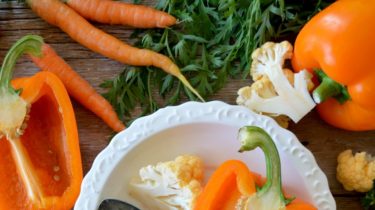Breakfast: A Beginners Guide

Most of us have been doing it for years – for the most part of our lives. Some of us do it religiously, some do it every now and then. Some of us do it when we feel like it; others when we have the time. Yes, the humble tradition of breakfast. As it’s number one fan, it gets me out of bed in the morning, long before my body is ready to.
Breakfast is almost as old as civilisation itself. Whilst one would be forgiven for thinking it’s evolved significantly alongside our evolving societies, the peasants responsible for building Egypt’s pyramids are reported to have started the day with beer and bread, not dissimilar to the breakfast of some uni students today.
This post is not going to tell you that most breakfast cereals have high amounts of sugar in them (up to 30%), nor that study after study points to a magnitude of reasons why we should eat breakfast, because I’m trusting that you’ve heard it all before. Instead, I’d like to share four breakfast-related thoughts/fun facts, which may debust a myth or make you reconsider your current breakfast choice.
1. “ Liquid Breakfasts”, or as I prefer to call them, “flavoured, watery-milky drinks”. You know, the little tetra packs that make you believe they’ve whizzed up a nutritious breakfast cereal and packed all the goodness into a 250ml carton. What you may not know is that (in Australia), the ingredients on the side of any packet are listed in descending order by weight. Here are the ingredients of one type drink: Filtered Water, Skim Milk Powder, Cane Sugar, Wheat Maltodextrin, Soy Protein, Vegetable Oils (Sunflower, Canola), Hi-Maize Starch, Corn Syrup Solids, Inulin, Fructose, Cocoa (0.5%), Cereals (Oat Flour, Barley Beta Glucan), Minerals (Calcium, Phosphorus), Food Acid (322), Flavour, Vegetable Gums (460, 466, 407), Vitamins (C, A, Niacin, B12, B2, B6, B1, Folate), Salt.
What this really means is that the top four ingredients, what makes most of it up, is water, skim milk powder, and sugars, and cereal makes up less than 0.5% of the actual product. It’s pretty much flavoured, sweet, milky drink with some added micronutrients that’ll set you back around $5-6 per litre.
If a drink like this is all you can handle in the morning, it’s still better than nothing. But to step it up a nutritious notch and down an economical notch, may I suggest a glass of low fat milk with Milo? Sure, it’ll take an extra 45 seconds to prepare, but it’ll also cost less than one quarter of a liquid breakfast, and you’re getting a myriad of nutrients (including 30% of the Recommended Dietary Intake of iron, the micronutrient the world is most deficient in).
2. “Protein Leverage Hypothesis” – three sciencey words that leave you scratching your chin, looking into the distance and having a curious “hhhmmmmm”. Well, at least that’s how I reacted. The Protein Leverage Hypothesis was suggested ten years ago and in short, suggests that humans have a fixed daily protein target that must be reached to feel satisfied and for optimum functioning.
Over the decades, as the number of kilojoules we consume daily (and the resulting obesity epidemic) has grown, the amount of protein we eat on a daily basis has stayed surprisingly consistent. Instead, our fat and carbohydrate intake has increased significantly. This is explain by the protein leverage hypothesis. If a food or meal is low in protein but high in fat/carbohydrate, we keep eating until we feel satisfied – by hitting a “protein quota”. If a meal was high in protein, you would need to eat less of it to feel satisfied and meet this quota – hence less energy intake and less chance if gaining excess weight.
The authors of this hypothesis have since examined 38 published trials measuring the protein, carbohydrate and fat intake in participants. It found that the amount of protein consumed was negatively associated with total energy intake irrespective of the amounts of carbohydrate or fat – in other words: the less protein, the more energy consumed. Cool story bro, but what does that have to do with breakfast?
Eggs! Bodybuilders and the like have known for decades eggs are great sources of high biological value protein. Despite many bodybuilders having their brains fried over the years with steroids, they’re onto something. Eggs have been shown to be one of the best breakfast choices, especially in preventing unwanted weight gain. In various studies, when people have eaten an egg based breakfast, they have consumed less energy throughout the rest of the day, and as a result, over weeks have lost significantly more weight compared to people eating carbohydrate or fat rich and protein poor breakfast options with the same number of kilojoules in them. For example, if one person ate eggs on toast for breaky with 1500kJ, they would reach their protein “target” earlier than someone who ate Coco-Pops for breakfast also with 1500kJ, meaning they’d feel fuller across the day and therefore eat less. And in case you’re about to cry “but my cholesterol!”, rest assured. There is inconclusive evidence supporting a relationship between dietary cholesterol (such as the cholesterol found naturally in eggs) and cardiovascular disease. The Heart Foundation suggests that up to six eggs per week can be part of a healthy diet. For those already at risk of heart disease: there is insufficient evidence to be putting a number on the amount of egg safe to eat. However, they can be enjoyed in moderation as part of a diet high in unsaturated fats and low in saturated fats.
3. A breakfast of eggs wouldn’t be complete without bacon (according to this dietitian’s boyfriend). But what about all of the websites telling us that bacon will kill us with all of their nitrates?
“Nitrates? Sounds kinda chemically, so surely they can’t be good.” Bacon (as well as many pink looking processed meats, like ham and hot dogs) have sodium nitrate added as a preservative and to ensure it:
a. doesn’t go off before you get the chance to fry it up on Sunday (and possibly give you the life threatening food borne illness Botulism), and
b. retain it’s deliciously tasty goodness.
But surely a CHEMICAL that is a PRESERVATIVE in our FOOD is doing us DAMAGE, right???? RIGHT?????
Not exactly. Chemicals make up everything in this world (Chemistry 101 right here), and Nitrogen is one of those (if it wasn’t for Nitrogen protein, humans and more importantly, bacon, wouldn’t exist). Nitrogen cycles between the air, land, and water, and nitrates and nitrites are forms in which it exists in. Most of our exposure to nitrates and nitrites is through fruit and vegetables, foods long proven to have beneficial health effects against a range of diseases. Processed meats account for less than 10% of total dietary exposure to nitrites.Rest reassured that exposures to nitrates and nitrites in foods are not considered a health and safety risk. That said, the World Cancer Research Fund has found that the consumption of red meat and processed meat is convincingly associated with a modest increased risk of colorectal cancer (with the risk most associated with processed meats). Reasons behind this are being studied with various theories existing. So enjoy bacon sometimes, and enjoy unprocessed forms of protein like fish, chicken and legumes most of the time.
4. If you’ve found a good soy milk than you’ll agree with me here when I say it CAN be delicious. Personally, it’s my cereal topping of choice (for taste and nutritional reasons). Though stand in the supermarket’s chilled drinks section and I don’t blame you for feeling overwhelmed by the “low fat, no fat, full cream, high calcium, high protein, soy, light skim, Omega 3, high calcium with vitamin D or extra dollup” options. I’m happy to stand corrected, but in my opinion soy is equal to cows milk in nutrition, with the alternative versions of almond, rice, oat and coconut milks less nutritious. Why? In short, most soy milks are fortified to have a similar micronutrient content to cows milk, ensuring we receive sufficient amounts of calcium and riboflavin, among other nutrients. Almond milk, for example, is often not fortified with calcium and like rice milk, is low in protein. Furthermore, it is often around only 2-3% almonds, making it mostly very expensive (and protein lacking) water. Coconut milk, meanwhile, is significantly higher in saturated fat than other non-dairy alternatives and is lacking in protein and calcium. If you are after a cows milk substitute, make sure there is around 3g protein per 100ml (for reasons described above), and at the very least, calcium is on the ingredients list. Your bones will thank you/me at some point in your ageing process.
So now you’re all knowledged up (and if you had breakfast you will better retain that information), I’d like to share a tried and tested breakfast recipe that had been with me my whole life. Since my mum was young adult let loose on the world she has, every day without fail, had her homemade muesli for breakfast. When I was let loose on the world I altered the recipe somewhat (making it slightly cheaper and slightly quicker to make, because I am a lazy tightase) and to me, it is the holy grail of muesli’s. It could not be easier to make if you tried. It cost me $11.42 per kg (the average supermarket muesli will cost anywhere from $3-20 per kilo), so it’s comparable in price, but this one has much more nuts, seeds and fruit than the cheaper varieties without the price of the “gourmet” versions. It doesn’t have bells or whistles like some cacoa nib/goji berry/ infused vanilla versions, but it’s simple enough, delicious enough, and nutritious enough, that I’ll probably follow mum’s footsteps and still be eating it for the next few decades, minimum. And with that, I present you with Super Easy, Super Healthy Everyday Muesli.







